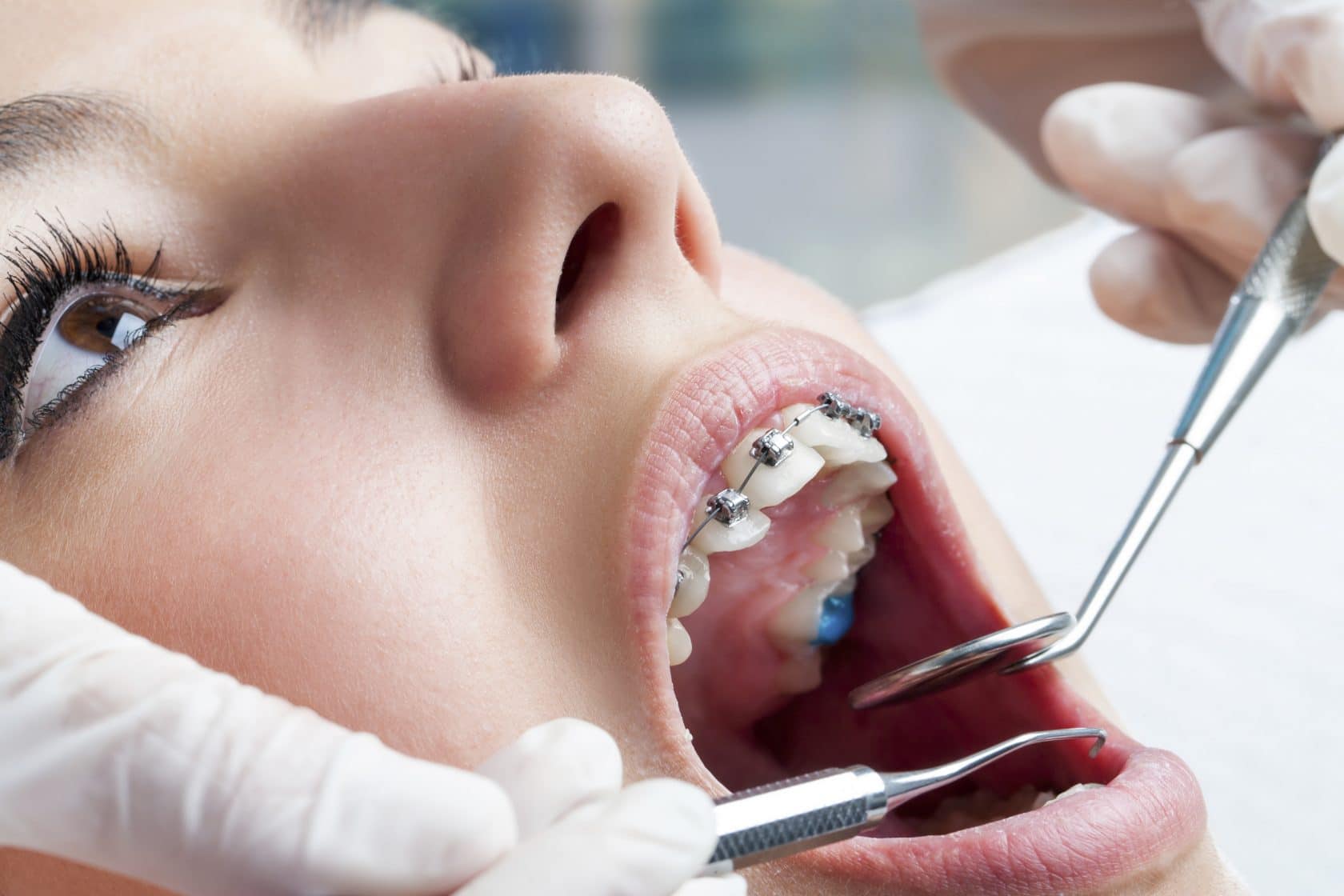How Cumming Orthodontics Addresses Common Braces and Invisalign Issues
How Cumming Orthodontics Addresses Common Braces and Invisalign Issues
Blog Article
Comprehensive Overview to Orthodontics Treatments for Correcting Dental Misalignments
In the world of orthodontics, the trip to achieving a completely lined up smile entails a myriad of procedures tailored to fix dental misalignments. From typical dental braces to invisible aligners and even surgical options, the field of orthodontics provides a variety of remedies to address varying levels of oral abnormalities. Understanding the intricacies of each procedure, including their mechanisms, benefits, and potential drawbacks, is important in making notified decisions regarding one's orthodontic treatment. As we navigate through the extensive guide to orthodontic procedures for remedying oral imbalances, the detailed details of each method will unfold, clarifying the course towards a unified and functional dental alignment.
Orthodontic Procedures Review

Along with traditional dental braces and clear aligners, orthodontists may additionally advise other treatments like headgear, palatal expanders, or retainers to attend to details placement problems (cumming orthodontics). These procedures are tailored to every person's unique requirements and might entail a combination of treatments to accomplish the wanted outcomes. Regular modifications and tracking are crucial parts of orthodontic treatment to make sure progression gets on track and to make any required adjustments in the process. By undertaking orthodontic procedures, patients can not only accomplish a straighter smile however likewise enhance their total dental wellness and function.
Traditional Braces: Exactly How They Work
When considering orthodontic therapies for dental imbalances, conventional dental braces attract attention as a time-tested method for dealing with teeth placing. Traditional dental braces contain brackets, wires, and bands that interact to use constant stress on the teeth, slowly relocating them into the preferred alignment. The brackets are affixed to the teeth using an unique adhesive, and the wires are threaded with the braces. By adjusting the tension of the cords, orthodontists can control the direction and pressure applied to each tooth, assisting them right into proper positioning with time.
As pressure is applied to the teeth through the braces, the bone surrounding the teeth is reshaped to sustain the new tooth positions. Patients will require normal changes at the orthodontist's workplace to make certain the dental braces proceed to use the right stress for efficient teeth motion.
Undetectable Aligners: Benefits And Drawbacks
These clear, personalized trays are basically undetectable when worn, making them an enticing choice for people seeking a more cosmetically pleasing orthodontic treatment. People can eliminate the aligners before consuming or brushing their teeth, minimizing the risk of food obtaining stuck in the appliance and streamlining the cleaning process.

Surgical Orthodontic Options
Surgical interventions in orthodontics existing feasible alternatives for addressing complex oral misalignments that may not be successfully resolved with conventional orthodontic treatments. While invisible aligners and typical braces can remedy lots of orthodontic issues, certain instances require surgical treatment to achieve optimal outcomes. Surgical orthodontic alternatives are usually recommended for severe malocclusions, substantial jaw disparities, and cases where discover this info here the underlying bone framework requires modification to attain appropriate positioning.
One common medical orthodontic procedure is orthognathic surgical treatment, which includes rearranging the jaws to remedy functional concerns such as difficulty talking or chewing. This dental implant procedure surgical procedure is commonly carried out in collaboration with an orthodontist that helps straighten the teeth prior to and after the procedure. Surgical orthodontics might also entail procedures to reveal affected teeth, remove excess periodontal tissue, or improve the jawbone to produce a more harmonious facial profile.
Prior to taking into consideration surgical orthodontic options, individuals go through an extensive examination to determine the requirement and potential benefits of such interventions. cumming aligners. While surgery may appear daunting, it can significantly boost both the feature and visual appeals of the smile in situations where traditional orthodontic treatments drop short
Retainers and Post-Treatment Treatment

Failure to abide with post-treatment treatment instructions can result in regression, where the teeth progressively relocate back in the direction of their original positions. Regular retainer wear, excellent dental hygiene, and regular dental exams are crucial for keeping the results achieved via orthodontic surgical procedure and making certain the long-lasting stability of the corrected oral positioning.
Conclusion
In conclusion, orthodontic procedures supply different alternatives for fixing oral misalignments. Surgical orthodontic alternatives are available for a lot more severe misalignments. On the whole, orthodontic procedures can successfully boost dental health and wellness and visual appearance.
As we navigate via the comprehensive guide to orthodontic treatments for correcting dental imbalances, the intricate details of each technique will certainly unfold, dropping light on the course towards a useful and harmonious dental placement. - orthodontics
One of the most typical orthodontic therapies is the usage of braces, which consist of steel braces and wires that dental braces apply mild pressure to progressively shift teeth right into the wanted position.When taking into consideration orthodontic treatments for oral misalignments, standard dental braces stand out as a tried and true technique for remedying teeth positioning. Additionally, unnoticeable aligners may not be suitable for intricate orthodontic issues that require more considerable teeth activity, as they are typically suggested for mild to modest situations. Retainers are tailor-made orthodontic devices made to hold teeth in their remedied settings after the completion of orthodontic treatment.
Report this page